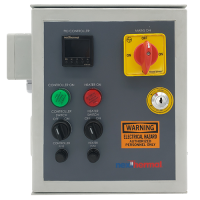Creating a healthier home environment has become a top priority for many American families. As awareness grows about the potential dangers of certain chemicals in everyday items, more people are seeking safer substitutes to reduce exposure to toxins. One area of increasing concern is the presence of per- and polyfluoroalkyl substances (PFAS) in common household products. For those researching ways to minimize health risks, exploring Pfas Free Alternatives is an effective starting point to transition toward a nontoxic lifestyle.
Understanding PFAS and Their Risks
PFAS are a group of man-made chemicals widely used for their water, grease, and stain-resistant properties. Found in products such as nonstick cookware, food packaging, waterproof clothing, and cleaning agents, PFAS are often referred to as “forever chemicals” because they do not break down easily in the environment or the human body. Over time, exposure to PFAS has been linked to a range of health concerns, including hormone disruption, immune system effects, and increased risk of certain cancers. As a result, many consumers are now prioritizing safer choices for themselves and their families.
Everyday Products to Replace with PFAS-Free Options
Transitioning to a safer home starts by identifying and replacing items that may contain PFAS. Here are some common household categories where PFAS may be present, along with safer alternatives:
- Cookware: Traditional nonstick pans are often coated with PFAS. Opt for alternatives like stainless steel, cast iron, or ceramic cookware, which deliver excellent performance without the chemical risks.
- Food Packaging: Fast food wrappers, microwave popcorn bags, and takeout containers may be lined with PFAS. Choose fresh foods and store leftovers in glass or stainless steel containers.
- Textiles: Stain-resistant carpets, upholstery, and water-repellent outerwear frequently contain PFAS. Look for untreated fabrics or those specifically labeled as free from chemical treatments.
- Cleaning Products: Some cleaning sprays and waxes use PFAS for their grease-fighting abilities. Select plant-based, biodegradable cleaners with transparent ingredient lists.
Making the switch to PFAS-free alternatives doesn’t have to be overwhelming. Here are some actionable steps to help you create a nontoxic home:
- Read Labels Carefully: Manufacturers are increasingly labeling products as PFAS-free. Look for this assurance when shopping.
- Research Brands and Products: Seek out reputable resources and product guides that verify the absence of PFAS and other harmful chemicals.
- Prioritize High-Use Items: Start by replacing items you use daily, such as cookware and food storage containers, before moving on to less frequently used items.
- Educate Family Members: Share your knowledge about PFAS and involve the whole household in making safer choices.
The Benefits of Going PFAS-Free
Choosing PFAS-free alternatives offers peace of mind and long-term health benefits. By reducing exposure to persistent chemicals, you are supporting overall wellness and contributing to a cleaner environment. Embracing non-toxic products also often means supporting companies that value sustainability and transparency, further promoting a safer future for all.
A thoughtful approach to everyday purchases can make a significant difference. By staying informed and seeking out safer options, you can foster a healthier living space and set an example for others. As the movement toward non-toxic living gains momentum, finding reliable information and making mindful choices will ensure your home is both comfortable and safe for years to come.
